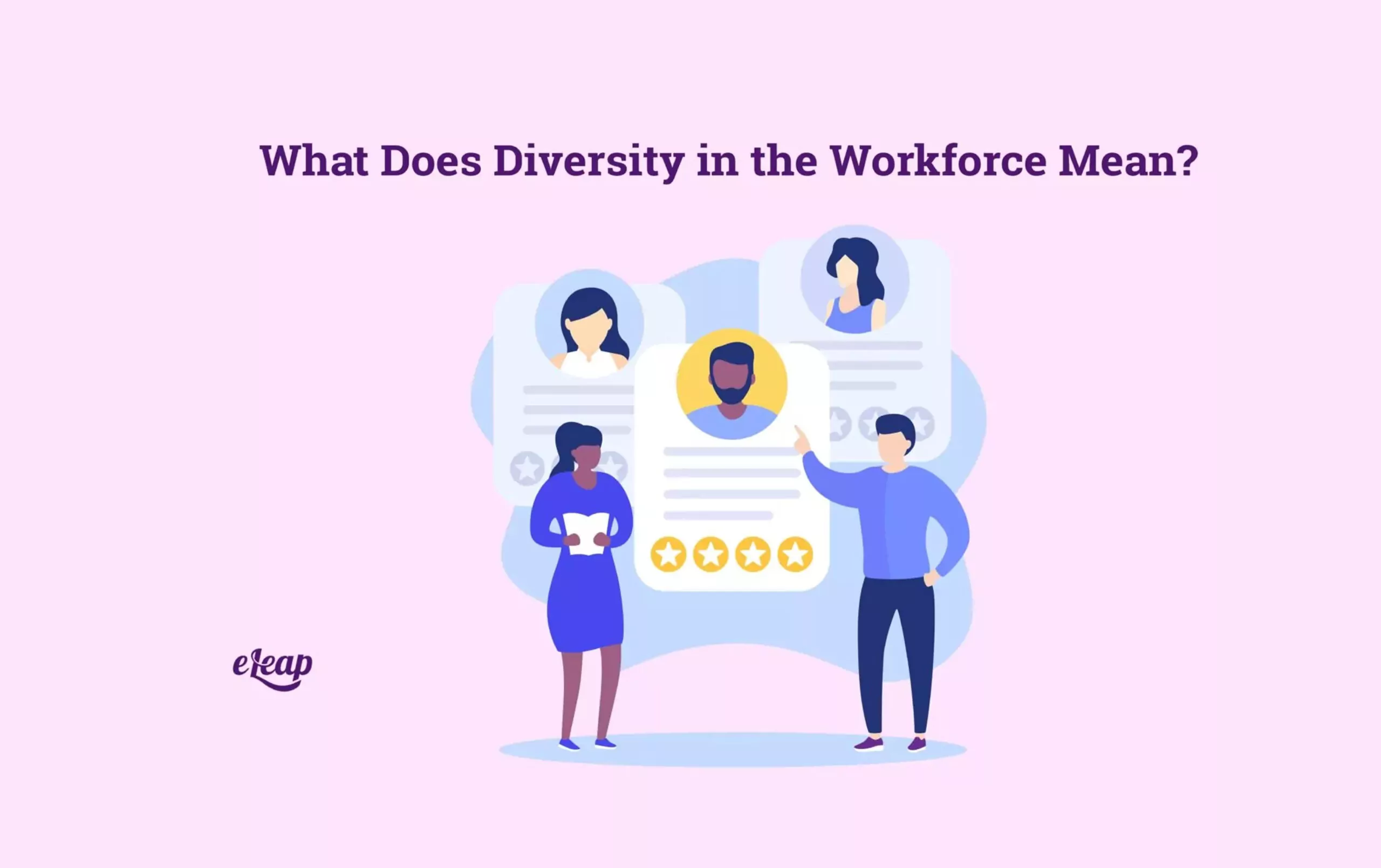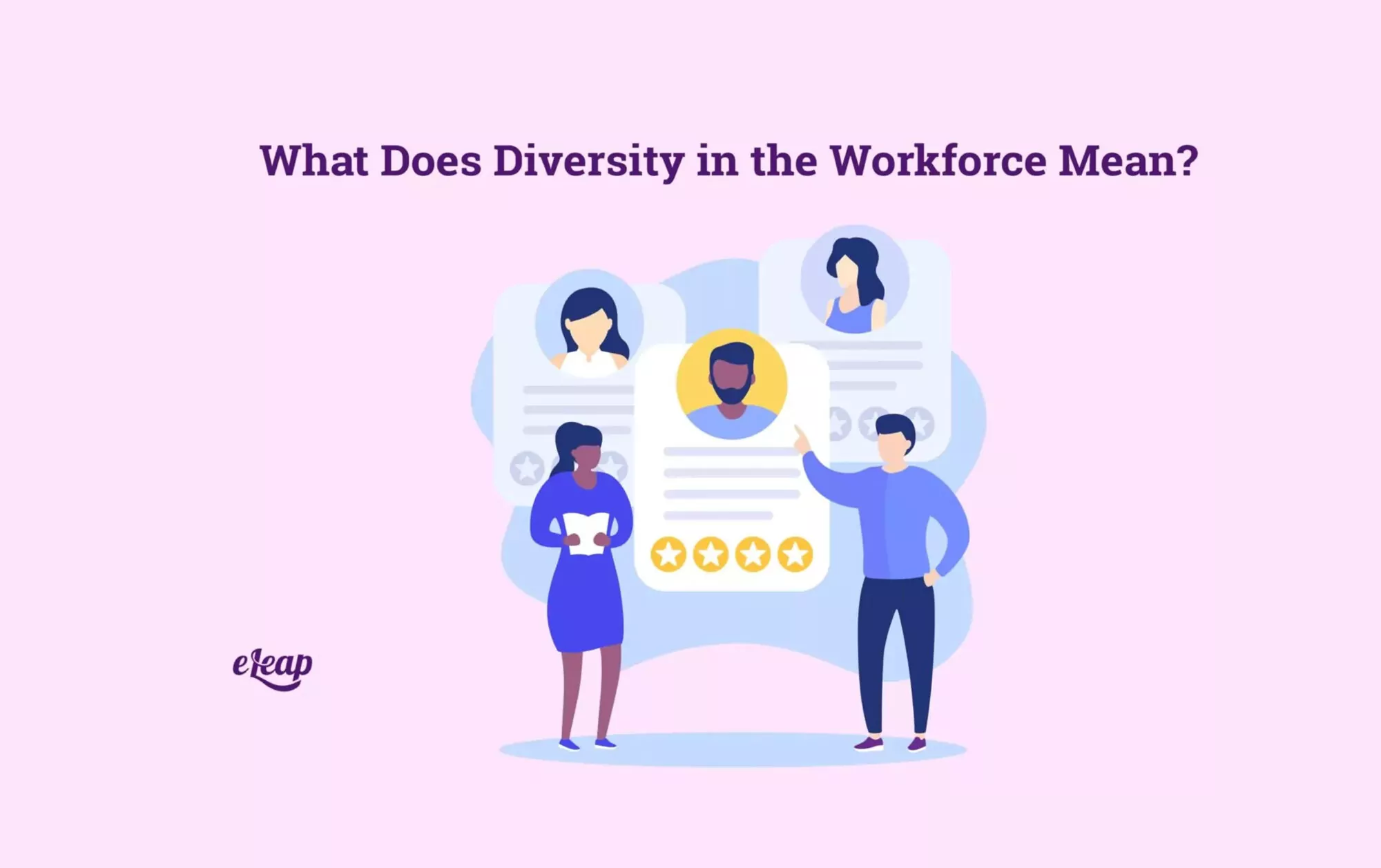What Does Diversity Mean to You?

What does diversity mean to you? Diversity is often confused with equity and inclusion. While the words are related, they aren’t interchangeable. It’s time for organizations to understand what each of these terms means and learn how to incorporate DEI protocols into their framework.
When we talk about diversity, equity, and inclusion, it’s essential to understand that while these words aren’t interchangeable, they do work together. Your company may place the most importance on diversity, while the neighboring company places emphasis on inclusion. Let’s begin at the beginning and define these three words and how they work together.
The Meaning of Diversity
First, it must be clearly understood that people are not diverse. Job applicants are not diverse. Saying someone is diverse has become the way some people refer to others who belong to less privileged, non-dominant groups of the population. However, doing this implies that there are portions of society that are more normal or accepted, which gives the impression that those who aren’t part of the dominant groups are either insignificant or abnormal.
Organizations, unlike people, can be diverse. What does that diversity mean? Before we can truly define diversity, we must understand that it is a relational concept. Diversity is measured based on the whole of a team or organization.
People think of diversity as being different. In the context of an organization or team, diversity management does refer to a difference within that specific setting. A person isn’t diverse, but their collective experiences can be. People are individuals with individual thoughts and characteristics. However, the differences between the people in a given setting make that organization, team, or neighborhood diverse.
Many people think that diversity is a surface-level concept and that it only refers to the physical appearance of the people around them. For example, they think of diversity as only a mixture of races, genders, and ethnicities. However, true diversity goes beyond the physical to the factors that shape individuals into the people they are.

Look at the makeup of your team. Each individual brings with them their experiences, ideas, cultural ideations, and religious backgrounds. Those things are what create diversity within your team and organization.
Why should we incorporate a diverse population on our teams? Think about what your work environment would be like if everyone looked the same, talked the same, and acted the same. You would have a boring team, and it likely wouldn’t be very productive.
When you fill your team with a range of cultures, religions, genders, and ethnicities, you are inviting a variety of ideas, thought processes, and experiences to come together into a cohesive unit. What does diversity mean to you? Think about the picture that forms in your mind when you hear the word and build your team accordingly.
What Does Inclusion Mean to Diversity?
Diversity within an organization doesn’t mean that organization is inclusive. Inclusion isn’t a natural consequence of diversity within a team or organization; you have to facilitate it. Diversity means there are differences in the population, while inclusion means you find ways to allow the different populations to feel valued within your environment.
Inclusion is more about the quality of the experience with others rather than the number of different individuals. For example, diversity acknowledges the differences between people. Inclusion allows them to exercise those differences by giving them the space to follow their interests and cultural traditions.
Since inclusion requires work, companies need to be willing to plan for ways to include diverse ideas and cultures. To make any inclusion plan work, it’s imperative to work with the people the plan is designed to benefit. That’s the best way to know what these members of the team need to feel like they have value within the organization.
How can you turn your understanding of what diversity means into an inclusive work environment? Solicit the assistance of your team. Ask them what they need to feel like they truly belong within your organization. Then, listen to their answers.
When you discuss how to better accommodate the personal preferences of your team members, it helps them feel that you value not only their input but also their individuality. That individuality is what makes your team the productive, successful team it is. Use that individuality as an advantage to your team and your organization as a whole.
The Meaning of Equity and How It Relates to Diversity
Many people use the words equity and equality interchangeably. The words aren’t interchangeable; they mean different things. Equality means that everyone is treated the same. However, people aren’t all exactly the same.
Equity means that we recognize that people have equal standing but individual needs. Differences exist in a diverse workplace, and people still need support on an individual basis. Each person has different experiences and needs.
Often people who belong to non-dominant groups of society have more difficulty finding resources and opportunities than those in more dominant groups. When designing an equitable, diverse area, you identify areas where there are barriers, and you work to put everyone on the same level.
Equality-based mentality says that one size fits all regardless of the group. Equity-based mentality chooses to see that everyone is different, and one size fits all only works for a portion of society. Other members of society might choose not to attempt to fit into the one-size fits all mold.
The implementation of inclusion and diversity efforts often means that inequities will become more obvious. Often before an organization fully commits to diversity, inclusion, and equity efforts, someone within the organization champions the cause of DEI. These champions often volunteer to forward the cause of an equitable, inclusive workplace, but they can only give it divided attention along with their usual work tasks.
An equitable model of organization strives to provide individuals with the things they need to embrace their diverse backgrounds. For diversity and inclusion plans to work, they must be implemented in an equitable manner.
Equity means that you recognize that people, while part of a whole, are fundamentally individuals. Every individual has their own set of experiences and backgrounds that add a unique perspective to your team and organization. You recognize that each person has different needs, and those needs cannot be met with a one size fits all solution. You allow those individuals to express the parts of themselves that embody the meaning of diversity.
Building an Understanding of What Diversity, Equity, and Inclusion Mean
For models of diversity, equity, and inclusion to work, people in the workplace need to be on the same page. To do that, you must create a common definition of the three words.
Here are five steps for defining diversity, equity, and inclusion among your team.
- Gather your team in a meeting or conference room. Display the words “diversity,” “equity,” and “inclusion” prominently in the room.
- Have the entire team privately write down what they understand each word to mean.
- Compile the ideas, and as a team, decide what you mean by the words and how you understand them to work together.
- Which order makes the most sense to your team—diversity, equity, inclusion (DEI); equity, diversity, inclusion (EDI); or a different order for the words? In other words, which of the concepts does your team put the most importance on? Or is there a different word altogether that your team would prefer to use?
- With your word choices in mind, decide on the definitions you, as a team, feel are the best working definitions and summarize how the words work together.
After your team creates your working definitions of the terms, talk about how you see the concepts and how they apply to your organization. More specifically, how do they apply to your team within the greater organization management?
As your team creates its definitions of diversity, inclusion, and equity, brainstorm ways to continue incorporating the concepts of those terms as your team grows. Remember, the key is to appreciate the value of the background and experiences of each member of the team.
Wrapping It Up
Many people use the terms diversity, equity, and inclusion interchangeably. While they are related, the words don’t mean the same thing. When creating a truly diverse workforce, think about both the actual definition and what diversity means to you. People aren’t diverse, but your organization, and perhaps more importantly, your team, can be.
In conjunction with your team, sit down and create a model for what diversity, equity, and inclusion meet to you as well as how to better incorporate the concepts into your team going forward. When your team feels that you value them as individuals, you will have a more productive workforce. Remember to leave room for any further additions to your team and organization when you create your initial diversity model.